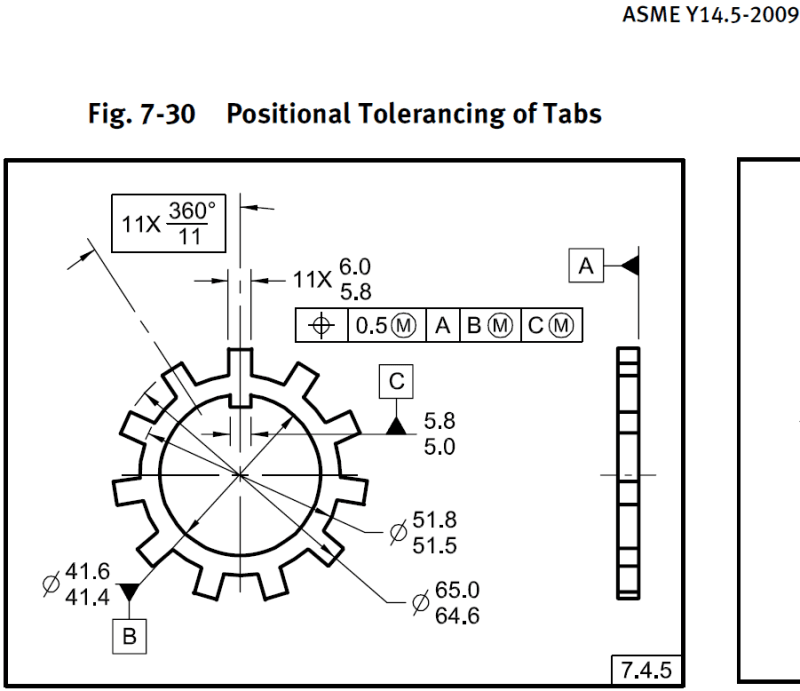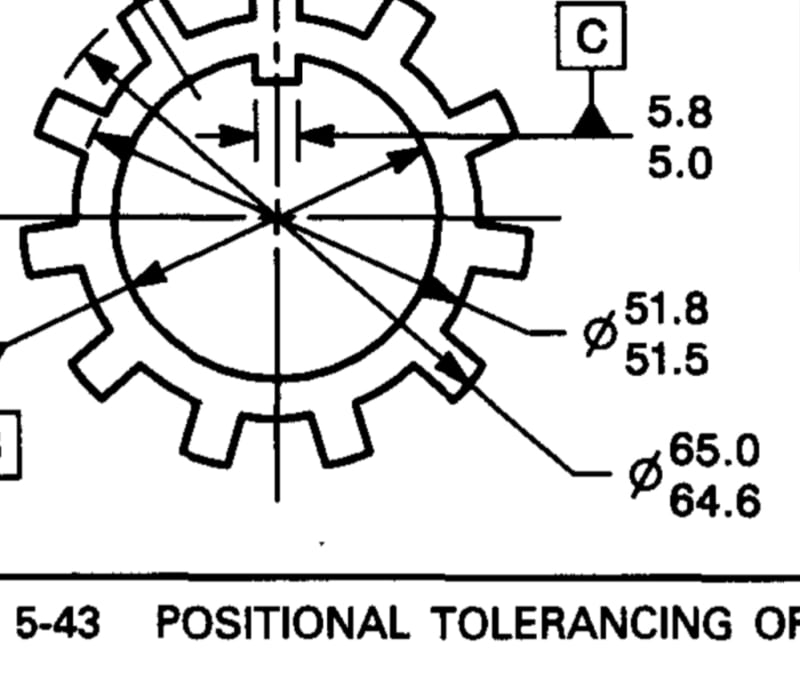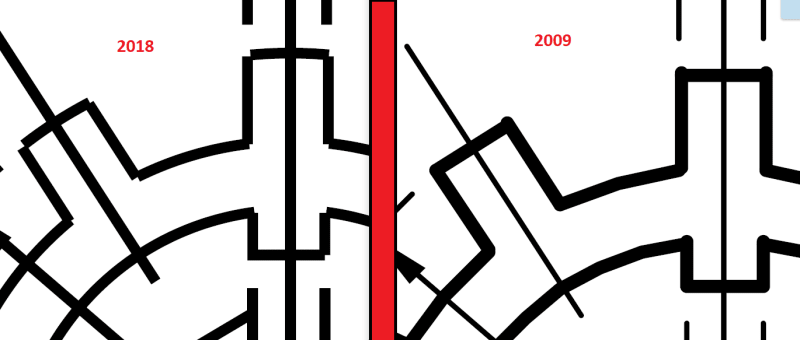Burunduk
Mechanical
- May 2, 2019
- 2,524
Is the 64.6-65.9 OD in fig. 7-30 in Y14.5-2009 a regular or irregular feature of size?
If it is an irregular FOS, Rule#1 does not apply to it, so the distinction may be practically important.
One way to support the stance that it is Irregular FOS is to say it is Irregular type A, as it is too interrupted to be considered "one cylindrical surface" and more importantly it has no opposed points, so if a less than 180° radius is invalid as a regular feature of size, this one should be invalid too, from the same reason/convention. Yet it is directly toleranced and can be contained by an actual mating envelope that is a cylinder, making it Irregular type A.
Opinions?
If it is an irregular FOS, Rule#1 does not apply to it, so the distinction may be practically important.
One way to support the stance that it is Irregular FOS is to say it is Irregular type A, as it is too interrupted to be considered "one cylindrical surface" and more importantly it has no opposed points, so if a less than 180° radius is invalid as a regular feature of size, this one should be invalid too, from the same reason/convention. Yet it is directly toleranced and can be contained by an actual mating envelope that is a cylinder, making it Irregular type A.
Opinions?



